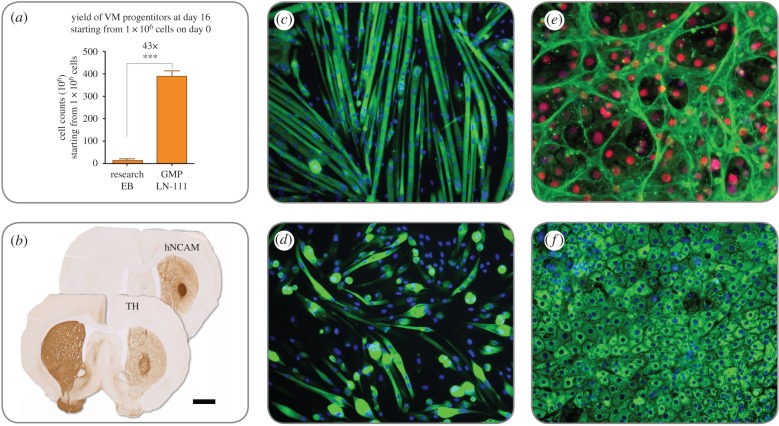Figure 3.
(a–f) Differentiation of hESCs on LN-111 towards DA cells results in more than a 40-fold increase of transplantable DA progenitors at day 16 (a) and the human progenitors innervate the striatum, become tyrosine hydroxylase (TH+) neurons and contribute to complete behavioural recovery after transplantation into animals modelling Parkinson's disease (b; scale bar represents 1.5 mm). LN-521 improves muscle cell proliferation and differentiation, giving larger myotubes, higher amounts of nuclei per myotube (express myosin heavy chain, MHC) and more consistent differentiation in long-term cultures (c; MHC in green) compared with cells on Matrigel (d; DAPI in blue). Human ESCs differentiated on LN-521 and LN-111 demonstrate efficient hepatocyte maturation with significant improvements in cell function [43]. The hepatocyte-like cells are highly organized on LN-521, express transporter protein MRP1 (e; green) and HNF4a (red), and a majority of the cells are albumin+ (f; green) Cell nuclei are visualized with DAPI (blue).

